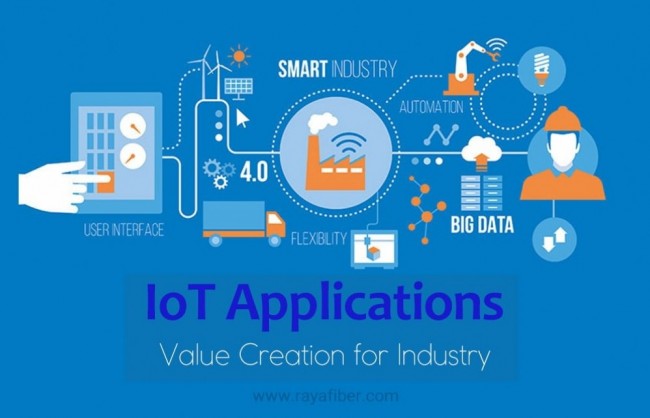
Is this the Golden Age of the Internet?
This week, we released the first Cisco Annual Internet Report (2018 – 2023), a global, regional and country-level forecast with analyses that assess digital transformation across fixed broadband, Wi-Fi, and mobile (3G and below, 4G, 5G) networks. This comprehensive study has been developed by the same analyst team that produced the Cisco Visual Networking Index (VNI) Forecast for more than a decade. The new report provides quantitative projections (over a 5-year period) on the growth of Internet users, devices and connections as well as network performance and new application requirements. Qualitative analyses and assessments are also provided in four strategic areas: applications, security, infrastructure transformation, and empowering employees and teams.
Perhaps the Best is Yet to Come
After working on Internet thought leadership and research for so many years, I continue to be impressed by the growth, innovation and global reliance on networking and technology. It wasn’t so long ago that some knowledgeable and well-respected scientists and business leaders dismissed the Internet as a passing “fad” with no future (you can Google it). One could argue that we might be in the golden age of the Internet now. For me, access and adoption, quality of experience, and a broad range of content choices define the impact and relevance of electronic and digital platforms.
Historical perspective: Past golden eras (radio and TV)
During the 1920’s to early 1940’s, 82 out of 100 Americans were radio listeners. Radio served as the first blueprint for “electronic mass media” and a one-to-many broadcast model for new entertainment formats and genres (quiz and talent shows, variety hours, play-by-play sports, children’s shows, et al.). Much of this content migrated to television. The 1950’s and 1960’s are generally regarded as the golden age of TV, which was highlighted by classic programming as well as the introduction of color (transforming the experience). Between 1949 and 1969, the number of U.S. households with at least one TV set rose from less than a million to 44 million. During that same period, the number of commercial TV stations rose from 69 to 566. Between 1959 and 1970, the percentage of U.S. households with at least one TV went from 88% to 96% (as TVs became more affordable). Today, there are more than 30,000 TV channels around the world.
The Internet has already revolutionized one-to-many and one-to-one communications and multimedia viewing. We can reach one another and our preferred content from a multitude of device options with a wide variety of form factors (over fixed and mobile networks). All of us can also be publishers or broadcasters through social media. Today, we take much of this for granted. But the next phase of this fledgling little experiment called the Internet (tongue firmly in cheek) may be the most intriguing and impactful.
Today’s Internet: bigger, better, faster (and still growing…)
According to the new Cisco Annual Internet Report, two-thirds (66%) of the global population will be Internet users by 2023. The North America region will have the highest Internet adoption from 2018 to 2023 (92% of the region’s population by 2023). The fastest-growing region will be the Middle East and Africa (10% compound annual growth rate [CAGR]) throughout the forecast period.

Below are just a few of the new insights and projections that help quantify how the Internet and our experiences using it will change over the next few years.

From my perspective, here are just some of the possibilities and implications that these ongoing innovations and improvements will have on our use of the Internet for the Future.
· The proliferation of IoT connections will bring a new wave of data and awareness of our daily activities and digital footprints (via smartphone apps and other devices). Many already have the ability to track and control their home environments (heating/cooling, lighting, etc.). We can track our physical activity and health conditions with fitness monitors. Data is the new currency and we are all becoming data scientists (to some degree, whether we know it or not). New uses and applications for IoT data will evolve from smart cities, smart cars; retail shopping and various forms of online activity that can be monitored, analyzed and applied to business strategies and tactics.
· 5G will further enable new IoT applications with extended reach and faster speeds. Applications that require greater bandwidth and lower latencies will have an access technology that allows them to flourish and nurture new innovations that were not previously possible with 4G technology.
· Wi-Fi6 will serve as a necessary complement to 5G. A significant portion of cellular traffic is offloaded to Wi-Fi networks to prevent congestion and degraded performance of cellular networks (due to demand). Public Wi-Fi enhancements will enable new partnerships and applications in hospitality/travel, healthcare, stadium venues, retail, and a host of other business verticals (for personal devices and IoT connections).
· Expansion and growth will also require new cybersecurity measures to prevent and mitigate risk. More devices and connections that are supported with more scalable networks and cloud computing provide new targets for nefarious activity. The good news is that artificial intelligence and machine learning can serve as powerful tools to automate security and detect intrusions before they become problematic or catastrophic.







CEO & Founder Haswell. Data lover, hobby chef, econometrician with strong experiences in the finance industry.